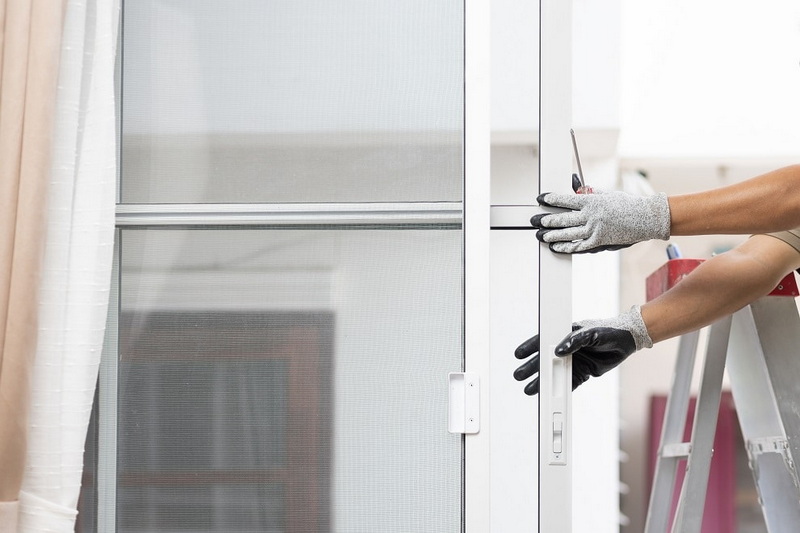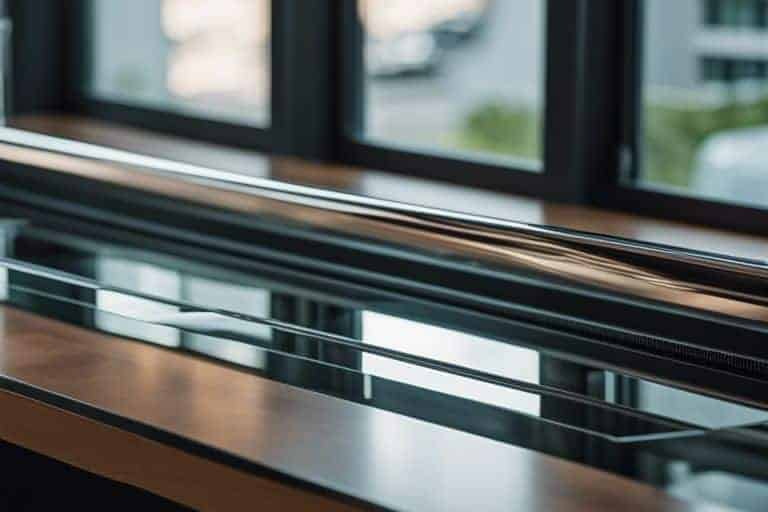English


Views: 222 Author: Dream Publish Time: 2025-01-24 Origin: Site











Content Menu
● Understanding Aluminum Windows
>> Signs You Need to Replace Your Aluminum Windows
● Benefits of Aluminum Windows
● Step-by-Step Guide to Changing Aluminum Windows
>> Step 1: Measure Your Current Window
>> Step 2: Prepare Your Workspace
>> Step 3: Remove the Old Aluminum Window
>> Step 5: Test Fit Your New Window
>> Step 6: Install Flashing Tape
>> Step 7: Set Window in Place
>> Step 9: Replace Interior Trim
● Maintenance Tips for Your New Aluminum Windows
● Common Mistakes to Avoid When Replacing Aluminum Windows
● FAQ
>> 1. How do I know if I need to replace my aluminum windows?
>> 2. Can I replace just one aluminum window?
>> 3. What tools do I need for replacing an aluminum window?
>> 4. How long does it take to replace an aluminum window?
>> 5. Should I hire a professional or do it myself?
Changing aluminum windows can significantly enhance your home's energy efficiency, aesthetics, and overall value. Whether you are replacing old windows or upgrading to more modern designs, this comprehensive guide will walk you through the entire process step-by-step.

Aluminum windows are popular due to their durability, low maintenance, and resistance to weathering. They come in various styles and finishes, making them suitable for different architectural designs. Before starting the replacement process, it's essential to understand the components of aluminum windows and identify signs that indicate a need for replacement.
- Drafts: Feeling cold air seeping through the window indicates poor insulation.
- Condensation: Moisture buildup between panes suggests seal failure.
- Difficulty Operating: Windows that stick or do not open smoothly may need to be replaced.
- Visible Damage: Cracks, rust, or corrosion on the frame can compromise integrity.
- Increased Energy Bills: Higher heating or cooling costs may indicate inefficient windows.
Before diving into the replacement process, it's worth noting the advantages of aluminum windows:
- High Durability: Aluminum is resistant to the elements and does not rust. It is structurally stronger than materials like timber, making it ideal for high-wind areas.
- Low Maintenance: Unlike wood, aluminum does not swell or shrink with humidity changes. Cleaning them twice a year is usually sufficient.
- Aesthetic Appeal: Aluminum frames provide a sleek, modern look and can be customized in various colors and finishes.
- Energy Efficiency: When coupled with insulated or double-glazed glass, aluminum windows can significantly reduce temperature loss and minimize cold drafts in your home.
- Affordability: Generally, aluminum windows are less expensive than wood or fiberglass options while providing long-term savings due to their durability and low maintenance requirements.
Before starting the project, gather the following tools and materials:
- Utility knife
- Screwdriver (flathead and Phillips)
- Pry bar
- Level
- Measuring tape
- Caulking gun and sealant
- Shims
- Safety goggles and gloves
- New aluminum window(s)
- Flashing tape
- Insulation foam

Accurate measurements are crucial for ensuring a proper fit for your new windows. Measure the width and height of the existing window frame at multiple points to account for any irregularities. Record these dimensions for reference when purchasing new windows.
Clear the area around the window inside and outside your home. Remove any curtains or blinds that might obstruct your work.
1. Take Out Interior Trim: Use a pry bar to carefully remove any interior trim around the window frame.
2. Cut Caulk and Sealant: Use a utility knife to cut through any caulk or sealant around the edges of the frame. This will help loosen it for removal.
3. Unscrew Frame Components: Locate and remove screws holding the frame in place, usually found along the sides and top of the frame.
4. Remove Sash and Frame: If applicable, remove any sashes first before pulling out the entire frame. Gently tap with a hammer if needed but be cautious not to damage surrounding structures.
Once you have removed the old window, clean out debris such as dust, old caulking, or insulation from around the opening. Inspect for any signs of rot or damage in the framing; repair as necessary before proceeding.
Before permanently installing it, test-fit your new aluminum window in the opening to ensure it fits correctly. Check that your opening is square using a level; adjust as necessary with shims if there are discrepancies.
Before placing your new window in position, apply flashing tape along the bottom of the opening to create a waterproof barrier.
1. Lift the Window into Position: With help from others if needed, lift the window into place.
2. Check Leveling: Use a level to ensure that the window is plumb (vertically straight) and square (horizontally straight). Adjust its position using shims if necessary.
3. Secure the Window: Secure the window to the buck using screws appropriate to your framing material only on the sides of the window (never on top or bottom). Make sure you don't over-tighten to avoid distorting the frame.
Insert insulation between the window frame and opening to increase energy efficiency. Apply silicone sealant around the outside of the window to seal gaps and prevent water and air infiltration.
Once everything is secure and sealed, replace any interior trim that was removed during installation.
To ensure longevity and optimal performance of your new aluminum windows:
- Regularly inspect seals for wear or damage.
- Clean frames with soap and water twice a year.
- Lubricate moving parts like hinges and locks annually.
- Check for condensation between panes; this may indicate seal failure requiring professional assessment.
1. Neglecting Proper Measurements: Always measure multiple times before purchasing new windows.
2. Overlooking Energy Efficiency: Invest in energy-efficient options even if they have a higher initial cost; they save money long-term.
3. Ignoring Proper Installation Techniques: Ensure correct installation techniques are followed; improper installation can lead to significant issues down the line.
4. Choosing Style Over Functionality: Prioritize functionality alongside aesthetics when selecting new windows.
5. Underestimating Maintenance Requirements: Be prepared for regular maintenance to prolong lifespan.
Changing aluminum windows can seem daunting at first, but with careful planning and execution, it can be a rewarding DIY project that enhances your home's comfort and aesthetic appeal. Always prioritize safety by wearing protective gear and ensure accurate measurements for a perfect fit.

Look for drafts, condensation between panes, difficulty operating windows, visible damage like cracks or rust, and increased energy bills.
Yes, you can replace individual windows without needing to replace all of them unless they are part of a larger unit.
Essential tools include a screwdriver, pry bar, utility knife, measuring tape, level, hammer, caulking gun, safety glasses, and gloves.
The process typically takes about 3–6 hours depending on experience level and whether additional repairs are needed on surrounding structures.
If you have experience with DIY projects and feel comfortable working with tools, you can replace an aluminum window yourself; otherwise, hiring a professional is recommended for best results.
[1] https://windowhardwaredirect.com/blogs/news/essential-tips-for-effective-aluminum-window-repair-a-comprehensive-guide
[2] https://magicglass.com.au/blogs/glass-blog-glazing-glass-projects-rope-access-news/top-6-benefits-of-aluminium-windows-and-doors
[3] https://www.andoverglassworksltd.co.uk/blog/mistakes-replacing-windows-doors/
[4] https://gitportesfenetres.ca/en/resources/how-to-install-aluminum-window/
[5] https://windowhardwaredirect.com/en-de/blogs/news/how-to-replace-aluminum-windows-a-step-by-step-guide-for-homeowners
[6] https://www.americanwindowcompany.com/the-pros-and-cons-of-aluminum-windows/
[7] https://aluminiumrevival.com.au/diy-vs-professional-services-and-industry-insights/common-mistakes-diy-aluminium-window/
[8] https://www.weiye-aluminium.com/how-to-replace-a-aluminum-window.html
[9] https://chateauglass.com/2021/10/01/advantages-and-disadvantages-of-aluminum-replacement-windows/
[10] https://www.ecolinewindows.ca/10-mistakes-avoid-replacing-window/
[11] https://hansons.com/blog/how-to-replace-aluminum-windows/
[12] https://www.swartland.co.za/7-top-benefits-of-aluminium-windows/
[13] https://aimwin.eu/7-most-common-window-installation-mistakes/
[14] https://www.youtube.com/watch?v=cUkwbxPrEq8
[15] https://todaydoor.com/installation-guide-and-selection-tips-for-aluminium-windows/
[16] https://cgiwindows.com/knowledge/the-benefits-of-vinyl-windows-and-aluminum-windows/
[17] https://www.aiswindows.com/blog/7-common-mistakes-to-avoid-when-replacing-windows-at-home/
[18] https://www.quickslide.co.uk/blog/guides/aluminium-windows-installation-guide/
[19] https://www.doityourself.com/forum/doors-skylights-windows/524529-how-replace-old-original-aluminium-windows.html
[20] https://fintecnic.pl/en/blog/aluminium-windows-advantages-and-disadvantages/
[21] https://texta.ai/articles/how-to-avoid-common-mistakes-when-installing-aluminium-windows-and-doors
[22] https://www.youtube.com/watch?v=zsLan58PW-Q
[23] https://www.youtube.com/watch?v=TQJIWhzrWc0
[24] https://www.evaframe.co.uk/news/top-10-benefits-aluminium-windows
[25] https://aluminium-windows-and-doors.co.uk/troubleshooting-common-aluminum-window-problems/
[26] https://www.bunnings.com.au/diy-advice/home-improvement/doors-windows/how-to-install-aluminium-windows
[27] https://window.rehau.com/uk-en/rehau-upvc-blog-replacing-aluminium-windows
[28] https://windowsandmore.ro/cele-mai-mari-8-avantaje-ale-ferestrelor-de-aluminiu/
[29] https://aluminiumwindowsanddoors.net.au/10-things-remember-installing-aluminium-window/
[30] https://ali-co.co.uk/aluminium-window-installation-guide
[31] https://www.wideline.com.au/video/how-to-install-an-aluminium-sliding-window/
[32] https://www.justvaluedoors.co.uk/pdf-downloads/june21/aluminium-window-install.pdf
Stainless Steel Grades 201 Vs 304: Cost Vs Performance Breakdown
316L Vs 316 Stainless Steel Grades: Which Is Better for Corrosion Resistance?
Comparing Austenitic Vs Martensitic Stainless Steel Grades: What You Need To Know?
Stainless Steel 430 Vs 304: Key Differences Explained for Manufacturers
304 Vs 316 Stainless Steel Grades: Which One Suits Your Project Best?
Stainless Steel Pipes Vs Galvanized Pipes: Durability And Cost Analysis
Comparing Stainless Steel Pipes And PVC Pipes: What You Need To Know?
Stainless Steel Pipes Vs Copper Pipes: Pros And Cons for Industrial Use
Seamless Stainless Steel Pipes Vs Welded Pipes: Key Differences Explained
Stainless Steel Pipes Vs Carbon Steel Pipes: Which One Suits Your Project?
